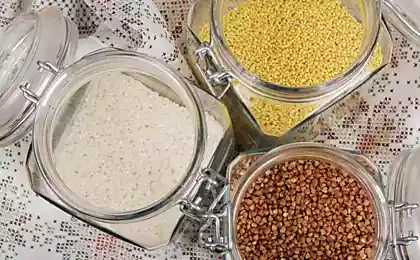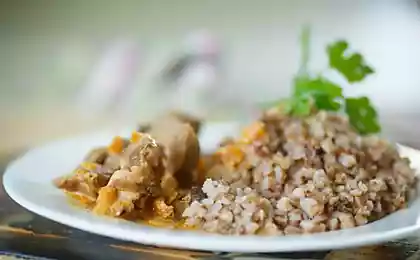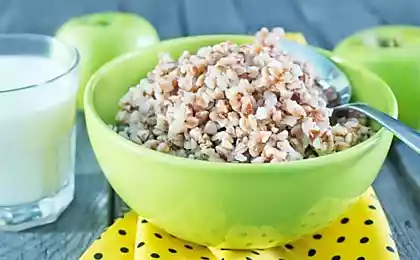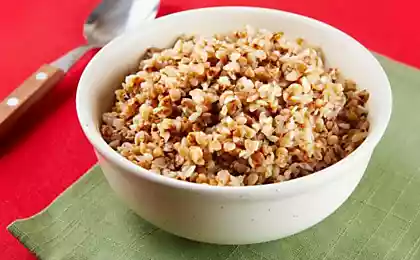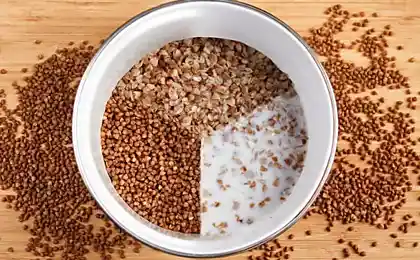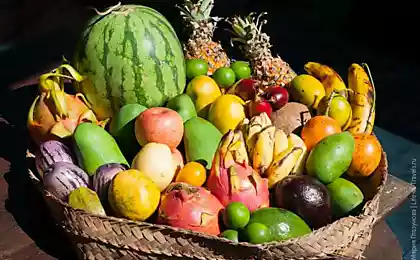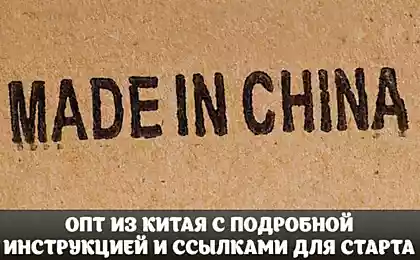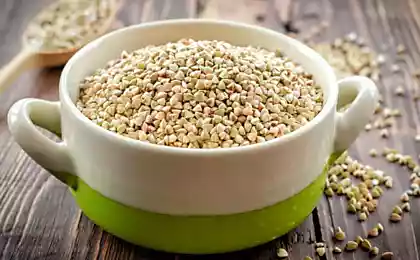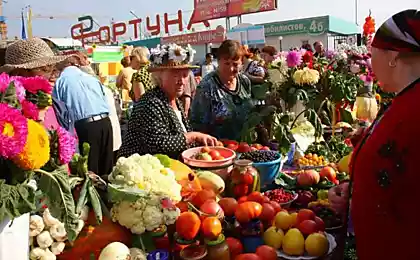244
Why on our shelves suspicious buckwheat from China and how to calculate it
Buckwheat is one of the products that most actively disappear from the shelves in times of economic instability and natural disasters. In times of crisis, its price can fluctuate greatly. Therefore, to choose a really high-quality product, it is important to know what types of buckwheat are and how, for example, to distinguish cereals of Chinese origin from domestic.

Collected buckwheat grains have a light greenish color, but can not be stored for a long time. Therefore, they are treated with steam or roasted. So buckwheat cereal acquires the color and aroma familiar to us since childhood.
In Russia, buckwheat porridge is one of the most popular dishes. But the birthplace of buckwheat scientists consider China, which annually harvests more than a third of the world harvest of this crop.

It is not surprising that in the case of a shortage of cereals in the Russian market (as it was in 2010), buckwheat comes from China. And given the agility of local manufacturers, the quality and safety of such a product cause reasonable doubts.
Interestingly, in the Middle Kingdom, buckwheat is not considered a particularly prestigious food. But it has become fashionable to take care of your health, and Chinese doctors recommend buckwheat to their patients. Buckwheat tea has become widespread. It is recommended for the elderly and people with high blood pressure.

In addition, the Chinese make buckwheat delicious buckwheat noodles characteristic grayish-brown color. And although it is much more difficult to prepare than usual, buckwheat noodles are valued much higher, since it retains all the benefits of buckwheat.
How to distinguish Chinese buckwheat
To take or not to take? Some buyers are afraid to buy Chinese buckwheat even in the presence of quality papers, noting the strange bitter taste. Others do not see anything special in saving a few rubles. According to them, buckwheat from China is not very different from ours, only darker and a little longer cooked.

In any case, buying or not buying Chinese buckwheat is a personal matter. But knowing what types of buckwheat exist, you can easily make an informed choice to purchase high-quality and safe goods.

Collected buckwheat grains have a light greenish color, but can not be stored for a long time. Therefore, they are treated with steam or roasted. So buckwheat cereal acquires the color and aroma familiar to us since childhood.
- Yadrit
The most common cereal with whole grain. It was about her in the old days they said: "Buckwheat porridge is our mother." The larger the nucleus, the more expensive it is. Could be fried or steamed.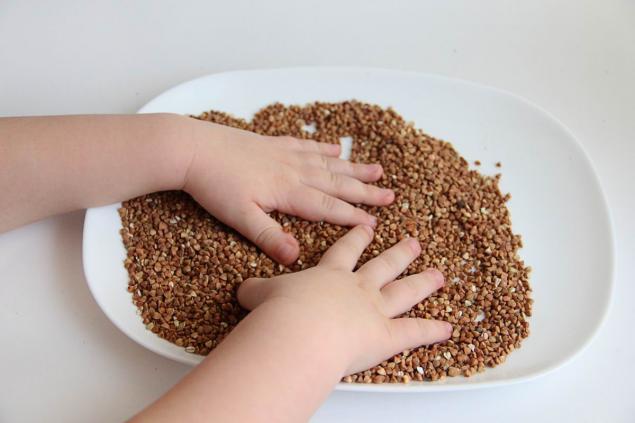
- Split or cut.
Crushed buckwheat cereal. It cooks faster, costs less, but is not stored as long as a kernel.
- Smolensk
Smaller than a sec and no bigger than a poppy grain. It is used for the preparation of viscous porridge. - Buckwheat flour
The smallest form of splitting buckwheat. Used to make noodles, bread, pancakes, buns. - Green buckwheat
It has a more delicate taste. Green buckwheat is not subjected to such a rigid heat treatment, as usual, and therefore it boasts a large number of useful substances and gets glue, so it is well made of pancakes, bats, cutlets.
In Russia, buckwheat porridge is one of the most popular dishes. But the birthplace of buckwheat scientists consider China, which annually harvests more than a third of the world harvest of this crop.

It is not surprising that in the case of a shortage of cereals in the Russian market (as it was in 2010), buckwheat comes from China. And given the agility of local manufacturers, the quality and safety of such a product cause reasonable doubts.
Interestingly, in the Middle Kingdom, buckwheat is not considered a particularly prestigious food. But it has become fashionable to take care of your health, and Chinese doctors recommend buckwheat to their patients. Buckwheat tea has become widespread. It is recommended for the elderly and people with high blood pressure.

In addition, the Chinese make buckwheat delicious buckwheat noodles characteristic grayish-brown color. And although it is much more difficult to prepare than usual, buckwheat noodles are valued much higher, since it retains all the benefits of buckwheat.
How to distinguish Chinese buckwheat
- Shape and size
Russian buckwheat is bigger. That's pretty obvious. It should be known that GOST 5550-74 "Buckwheat cereal" characterizes the nucleus as "whole and chipped buckwheat grains that do not pass through a 1.6 x 20 mm sieve." Domestic cereals have pointed edges. Chinese is a more rounded shape with smoothed faces. - Colour
Imported buckwheat has a darker color. This is due to the fact that Chinese buckwheat is roasted twice, and Russian once.
- Price.
Chinese buckwheat is much cheaper than domestic. If the price difference is large enough, then most likely you have an imported product. At the same time, it can be packaged in a Russian factory without specifying the country of origin.
To take or not to take? Some buyers are afraid to buy Chinese buckwheat even in the presence of quality papers, noting the strange bitter taste. Others do not see anything special in saving a few rubles. According to them, buckwheat from China is not very different from ours, only darker and a little longer cooked.

In any case, buying or not buying Chinese buckwheat is a personal matter. But knowing what types of buckwheat exist, you can easily make an informed choice to purchase high-quality and safe goods.
Why the words “men don’t cry” should be banned
Repentance of a woman who did not let a friend with children spend the night because of a formidable husband






